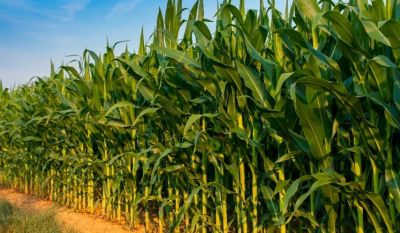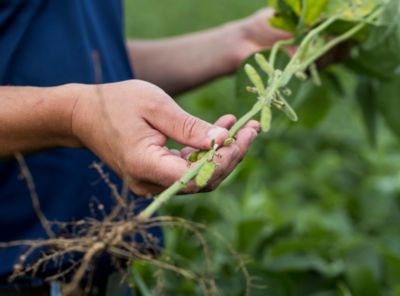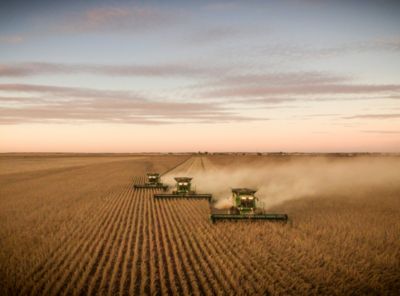Freeze Damage to Soybeans
Soybean plant tissue is more tolerant of freezing temperatures than that of some other crops such as corn. However, temperatures below 32 ºF can damage leaves, and tempera-tures below 30 ºF for an extended period can damage stems, pods and seeds. The severity of damage depends on the growth stage of the soybeans, the low temperature reached and the duration of the freezing temperatures.
Oftentimes, a first fall frost is light and limited in duration. Such a frost is most likely to damage only the leaves in the upper canopy of the plant. In such cases, soybean pods and seeds can continue to develop, and yield may be only minimally affected. However, a more severe freeze that damages stems, pods and seeds has the potential to reduce both the yield and quality of the crop.
Soybean Reproductive Growth Stages
Soybean researchers have divided soybean reproduct-ive development into eight stages – two each for flower-ing, pod development, seed development and maturity. Because flowering, pod development and early seed development occur in July and August, soybeans are rarely exposed to a frost at these stages. However, soybeans are exposed to potential frost damage at the full seed and maturity stages in a late-planted season and/or one with cool summer temperatures, especially in northern states. Should a frost occur before maturity, growers need to determine the soybean growth stage at the time of the freeze to estimate potential yield loss (Table 1 and Figure 1).
Table 1. Description of soybean growth stages R6 to R8.
Stage
|
Description of Soybean Growth Stage
|
R6 –
Full Seed
|
“Green bean” stage. A pod containing a green seed that fills the pod cavity found at one of the top four nodes of the main stem.
|
R7 – Beginning
Maturity
|
One normal pod on the main stem has mature color (brown or tan). At this stage, almost all pods and seeds have lost their green color. About 50% of leaves have turned from green to yellow.
|
R8 –
Full Maturity
|
95% of pods have reached their mature color. From this stage, harvest moisture (13 to 16%) is usually reached in about five to 10 days.
|
Assessing Soybean Damage
Frost damage within a soybean field may vary considerably, depending on microclimate effects, landscape position in the field, canopy density, and other factors. Generally, thick plant canopies formed by narrow rows and/or high plant populations tend to hold the soil heat better and protect the lower portion of the plants and pods to some extent. After a frost, it is best to wait two or more days before making a crop assessment, to allow damage to be fully expressed.
If only a light frost occurs, damage may be confined to the upper leaves in the canopy. After a waiting period, damaged leaves will appear wilted and dried, but usually remain on the plant. Undamaged leaves (likely lower in the canopy or in higher landscape positions in the field) should still appear green and healthy. Some maturity delay (several days) may be expected on damaged plants, and small pods near the top of the plant may abort or fail to fill normally.
If a more severe freeze occurs, leaves in the lower canopy may also be damaged, as well as stems and pods. Frost-damaged stems turn dark green to brown. Beans that were still green and soft at the time of the freeze will shrivel, reducing soybean yield (seed size and test weight), quality and drying rate. If beans had reached physiological maturity (R7) prior to the freeze, these yellow beans should dry normally, and quality should not be affected.
Soybeans are graded by USDA standards to determine the quantity of damaged seeds (e.g., heat damaged), splits, foreign material, and off-color (e.g., green) beans and loads with a musty or sour odor. With delayed maturity or frosted soybeans, loads could be discounted for most or all of the above criteria. For that reason, care must be taken in harvest, handling, drying, and storing the soybean crop.















